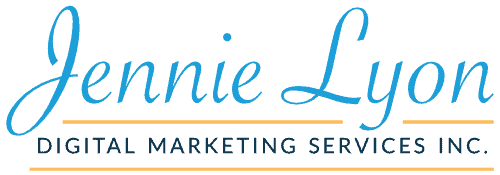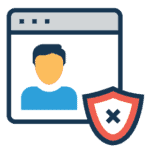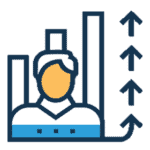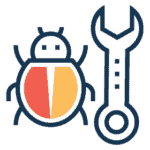How to Use a Podcast to Grow Your Business

As a digital marketer, I have to admit that I’m a little surprised at how many people don’t know what a podcast is. Especially given their rapidly increasing visibility.
The word “podcast” is a combination of the words “broadcast” and “iPod.” Over the last decade, podcasts have become one of the most popular forms of spoken-audio entertainment. Replacing radio as the background noise during our morning commutes.
There are countless podcasts out there in hundreds of different genres, including true crime, technology, fiction, comedy, and, of course, marketing. You can check out some of my favorite productivity podcasts here!
So, podcasts are a fantastic form of entertainment, but can they help you grow your business?
Starting a Podcast
While many people start podcasts for fun, as a small business owner, you have a return-on-investment to keep an eye on. The reason you want to start a podcast is better to position yourself as an expert in your industry and build your audience and customer base.
Creating a podcast isn’t quite as easy as sitting down at your computer with a mic and talking about the first thing that floats into your head. If you want to create a successful podcast that actually helps grow your business, you need to do a lot of planning.
First, you must purchase some equipment. As podcasting is an audio-based medium, you need the quality of your voice recording to be as high as possible. Now, I’m not suggesting that you go out and buy a thousand dollar microphone or anything like that. But here are some of my suggestions for getting started.
Your first step is to buy an excellent quality USB mic. I highly suggest the Blue Yeti Mic. It offers superb value for your money, with terrific sound and ease of operation! You may also want to purchase some extras like a pop filter to prevent “popping” sounds whenever you say a P or B. Finally, you will need audio editing software. You could splurge on something like Logic for Mac or Adobe Audition for PC. Or you could go with free options like GarageBand for Mac or Audible for PC. There is another option, of course. You could get me to do all of your audio editing for you!
[TWEET “Do you listen to any podcasts? Have you ever thought about hosting your own? Learn how!”]
Building Your Audience (and Business)
The reason why you publish blogs on your websites, engage with customers on social media, and present webinars is to position yourself as an expert in your field. Podcasting allows you to do that regularly.
To maximize your podcast’s potential, you should pick an overall topic that appeals to the broadest range of people. If you make the topic too insular, it will be challenging to attract subscribers. You can get into the nitty-gritty details of specific topics in some episodes but keep the general theme a bit more open.
To assist with this, you should create an editorial calendar for your podcast. It should be a week-by-week breakdown of topics, titles, talking points, products to promote, and guests. This way, you can keep everything organized, so your podcast recording sessions always have a focus.
Speaking of guests…
Have on LOTS of Guests
It can be difficult to figure out how to fill an entire podcast when it’s just you on the mic. But when you have a guest, everything becomes much easier!
Having a guest on your podcast can take on several formats. You could have a conversation with them about a specific topic. Or you could interview them about their field of experience. Either way, you’re going to be creating compelling content while also helping to build your audience through THEIR audience. Yay crossovers!
From Listener to Paying Customer
Here is the part that often trips up aspiring podcasters to grow their business.
One of the main reasons you want to position yourself as an expert online is so people will be attracted to your online product offerings. If you can’t convert your audience to paying customers, then you certainly aren’t getting the maximum value out of your podcasts.
One way you can do this is to include a compelling call-to-action at the end of every podcast. You don’t need to wing this. In fact, you should probably have this section scripted to make sure you hit all of the salient points. Your CTA could be to get people to download an opt-in, purchase one of your products, or get the listener on a free consultation with you.
[TWEET “Podcasting is bigger than ever, and starting your own can be a great way to grow your business!”]
Sponsors
If you listen to any podcasts, you know how often sponsors like SquareSpace or Audible are mentioned. Sponsorship and advertising are fantastic ways to earn money with your podcast, but there are other benefits as well.
Many audience members judge a podcast based on the quality of their sponsors. If they hear an established brand like SquareSpace, then they assume that the podcast has their seal of approval. While you are unlikely to get major sponsors for your first few podcasts, I highly recommend you reach out and try to land some brands ASAP. This will give your podcast credibility AND bring in little money.
Create New Content for Each Episode
An excellent way to build up your audience and audience base is to create brand-new content with every episode you release.
For example, if I was to release a podcast episode about the importance of Project Management, I could create a free opt-in to go along with that episode. This strategy would get people to go to my website after they listen, further driving them into my ecosystem of products.
If creating all of this new content sounds like way too much work, especially if you’re busy with the process of podcast production, I can help. Every week (or whenever you release a new episode), I can have brand-new content ready to go for you. This could be as elaborate as an opt-in or as simple as a blog.
Don’t Forget About the Details!
For a podcast to be successful, it needs to be more than just audio. It would be best if you had a professionally-designed graphic for the “cover art,” some music for your intro, and written show notes that include links to everything you talk about in the show, including products or guests’ websites. I would be delighted to help you create all of these components!
Podcasts are excellent pieces of audio content, but they aren’t the only ones. If you aren’t quite ready to release a podcast on a regular schedule, or you haven’t really done anything in audio form before, then creating a webinar can be the perfect stepping stone. It lets you build up your experience speaking on mic while also creating valuable content for your website and brand. If you’re curious about what goes into building a webinar, I invite you to download my free guide, The Ultimate Webinar Launch Planner Workbook.

But if you’d rather immediately jump into podcast creation, I can help there too! First, I would suggest contacting me today so we can have a conversation about the type of podcast you’d like to host. Then, we can get started on all of the necessary components to make sure your podcast is one that will break through the noise and help to grow your business!
P.S. Stay tuned! I am getting ready to launch my own marketing podcast! Hooray!






















